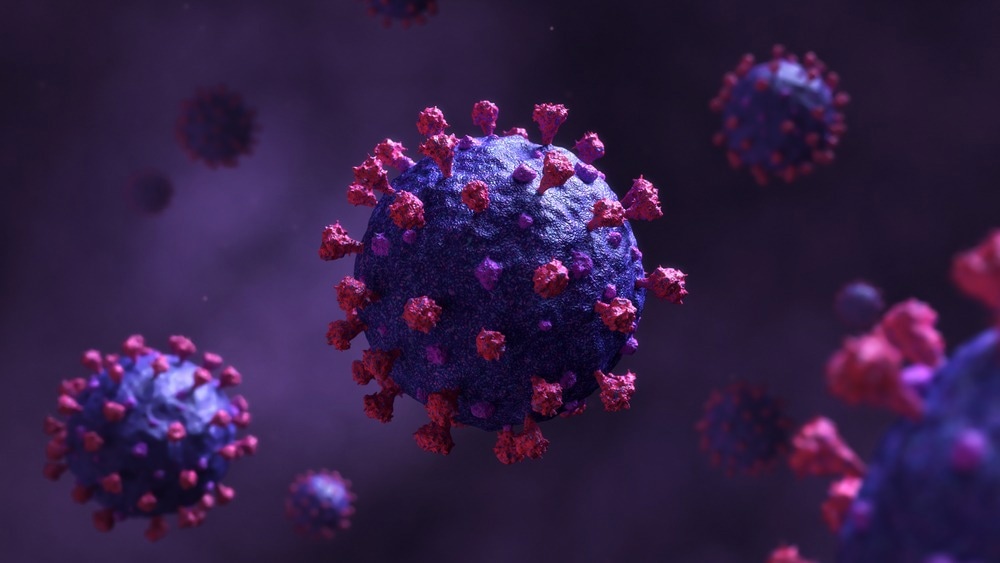Significant humoral immune evasion contributes to the emergence and rapid spread of Arg346-mutated BA.4 and BA.5 sublineages

In a recent study published in The Lancet Infectious Diseases, researchers measured the neutralizing titers of plasma samples against the severe acute respiratory syndrome coronavirus 2 (SARS-CoV-2) new variant of concern (VOC) Omicron's sub-variants BA.4 and BA.5 with arginine (Arg)346 mutations.

Background
The receptor-binding domain (RBD) region of the SARS-CoV-2 spike (S) glycoprotein in Omicron sub-variants BA.4 and BA.5 is acquiring mutations continuously. Multiple countries have witnessed the rise of BA.4/BA.5 subvariants with Arg346 S mutations viz., BA.4.6, BA.5.2.6, BA.4.1.9, BF.7, and BE.1.2. While these mutated Omicron sub-variants have Arg346Threonine (Thr) mutation, others, such as BA.4.7, BF.13 and BA.5.9 harbors Arg346Serine (Ser), and Arg346Isoleucine (Ile) mutations, respectively.
Notably, some of these Omicron sub-variants, especially BA.4.6, thus, have acquired a growth advantage compared to others, including the predecessor strains BA.4 and BA.5. Many studies have shown Arg346 as an important immunogenic amino acid residue that confers SARS-CoV-2 with the potential to escape neutralizing antibodies. Thus, there is an urgent need to evaluate drugs and vaccines against Omicron BA.4 and BA.5 sub-variants. In this context, it is also noteworthy that unlike Arg to Lysine (Lys) mutation in BA.1.1, mutations from Arg to Thr, Ser, or Ile resulted in a more severe antibody recognition shift.
About the study
In the present study, researchers obtained plasma samples from individuals who had received three doses of CoronaVac following breakthrough infection by Omicron BA.1, BA.2, or BA.5 or without SARS-CoV-2 infection. They collected plasma samples three to five weeks after breakthrough infections confirmed by reverse transcription-polymerase chain reaction (RT-PCR).
Further, the team used vesicular stomatitis virus (VSV)-based pseudoviruses in the neutralization assays. Using these assays, the team determined the pseudovirus-neutralizing activities of 11 monoclonal antibodies and four cocktail antibody drugs against the Arg346-mutated BA.4 and BA.5 sublineages.
Study findings
SARS-CoV-2 uninfected individuals who had received a three-dose regimen of CoronaVac exhibited a fold decrease in 50% neutralization titers (NT50) in the range of 1.5 to 1.7. The fold-decrease was more pronounced for BA.5.9, BA.4.6, and BA.4.7 sublineages than BA.4 or BA.5 since the former had Arg346Ile, Arg346Thr, and Arg346Ser mutations. BA.4/BA.5 sublineages with these mutations could also evade neutralization by plasma from BA.5 breakthrough infection cases. Moreover, they exhibited a 2.4 to 2.6-fold decrease in NT50. Conversely, BA.1.1 also had immune evading potential as it harbored an Arg346Lys mutation similar to BA.1.
The researchers noted nearly identical neutralization titer reductions for convalescents recovering from BA.1/BA.2 infections. Further, they found that BA.5 convalescent plasma showed higher neutralization titers against BA.5 than BA.1.1 and BA.1. However, convalescent plasma from BA.1, BA.2, and BA.5 breakthrough infection cases were more effective against the ancestral SARS-CoV-2 strain harboring Asp614Gly mutation. According to the authors, phenomenon(s) of immune imprinting or original antigenic sin were likely responsible for these observations.
Cilgavimab could not neutralize BA.4 and BA.5 sublineages with Arg346Ile, Arg346Thr, or Arg346Ser mutations. Thus, antibody cocktail Evusheld, a combination of tixagevimab with cilgavimab, remained ineffective against BA.4.6, BA.4.7, BA.5.2.6, and BA.5.9 sublineages. Likewise, the REGEN-COV cocktail, a combination of casirivimab with imdevimab, showed reduced reactivity against Arg346-mutated sublineages. Notably, bebtelovimab remained highly potent against sublineages with these mutations.
Conclusions
The current study showed enhanced humoral immunity evasion capability of BA.4 and BA.5 sublineages with Arg346 mutations. This observation has two significant implications. First, Omicron sublineages BA.4.6, BA.4.7, BA.5.9, BF.7, BA.5.2.6, BA.4.1.9, BE.1.2, and BF.13 might gain a transmission advantage during the ongoing COVID-19 pandemic. Secondly, this immune evasion could lead to the emergence and rapid dissemination of multiple Arg346-mutated BA.4 and BA.5 sublineages.
On top of that, there is a possibility of potential reinfections by BA.4.6 after recovery from BA.4 or BA.5 infection. Moreover, individuals exhibiting immunodeficiencies or comorbidities are at higher risk of reinfections by Omicron subvariants. Most importantly, the authors emphasized evaluating vaccines targeting BA.4 and BA.5 subvariants.
- Jian, F. et al. (2022) "Further humoral immunity evasion of emerging SARS-CoV-2 BA.4 and BA.5 subvariants", The Lancet Infectious Diseases. doi: 10.1016/s1473-3099(22)00642-9. https://www.thelancet.com/journals/laninf/article/PIIS1473-3099(22)00642-9/fulltext
Posted in: Medical Science News | Medical Research News | Disease/Infection News
Tags: Amino Acid, Antibodies, Antibody, Arginine, Convalescent Plasma, Coronavirus, covid-19, Drugs, Glycoprotein, immunity, Infectious Diseases, Lysine, Mutation, Omicron, Pandemic, Polymerase, Polymerase Chain Reaction, Pseudovirus, Receptor, Respiratory, SARS, SARS-CoV-2, Severe Acute Respiratory, Severe Acute Respiratory Syndrome, Stomatitis, Syndrome, Transcription, Virus

Written by
Neha Mathur
Neha is a digital marketing professional based in Gurugram, India. She has a Master’s degree from the University of Rajasthan with a specialization in Biotechnology in 2008. She has experience in pre-clinical research as part of her research project in The Department of Toxicology at the prestigious Central Drug Research Institute (CDRI), Lucknow, India. She also holds a certification in C++ programming.
Source: Read Full Article